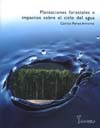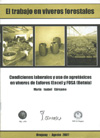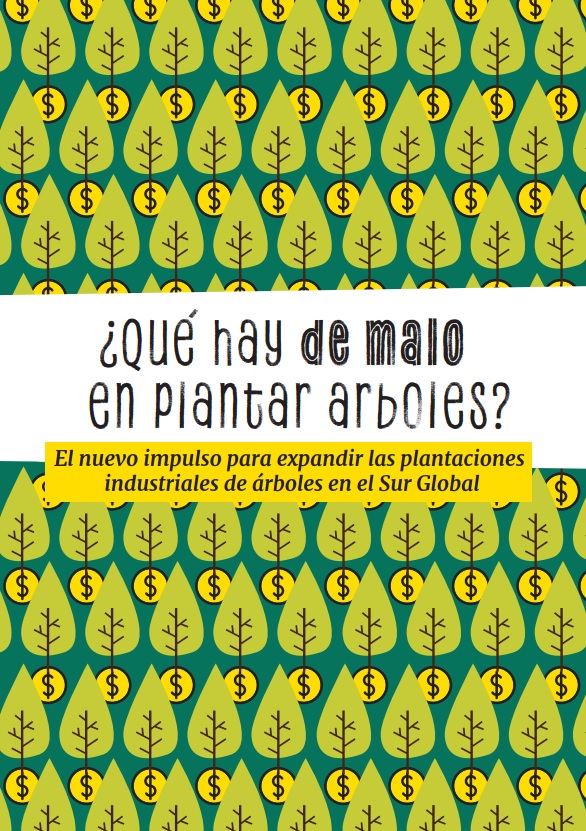Press releases:
– THE SUSPENSION OF THE UPM WORKS IS REQUESTED UNTIL THE COMPANY COMPLIES WITH THE ENVIRONMENTAL REQUIREMENTS FOR ITS AUTHORIZATION
– UPM APPEALS THE GOVERNMENT TO JUSTIFY ITS NON-COMPLIANCE
– UPM DIVERTS THE DISCUSSION, BUT DOES NOT REFUTE MOVUS COMPLAINT
– MOVUS WILL APPEAL JUDICIAL JUDGMENT REJECTING AMPARO ACTION
– MOVUS INSISTS IN BREACHES OF UPM AND APPEALS JUDICIAL DECISION
THE SUSPENSION OF THE UPM WORKS IS REQUESTED UNTIL THE COMPANY COMPLIES WITH THE ENVIRONMENTAL REQUIREMENTS FOR ITS AUTHORIZATION
A writ of amparo before the Justice was filed today by members of the Movement for a Sustainable Uruguay (Movus). in which is denounced the non-compliance by the UPM Company of the environmental conditions under which the installation of its new pulp mill in the department of Durazno was authorized and requests the suspension of the works in progress until these requirements are fully met.
The grounds for this protection action are found in the documentation of the National Directorate of the Environment (Dinama), where, through the reports made by its technicians, it can be verified that UPM exceeded the “maximum period of 6 months” to comply the conditions under which the Prior Environmental Authorization was granted, on May 14, 2019, to the projected pulp mill and free zone.
Pressed to meet the deadlines agreed in the contract, when UPM had not yet confirmed its investment decision, the previous government authorized the pulp mill on the condition that the company later completed key elements of the project. However, UPM began construction of the plant without meeting these requirements, some of which define the viability or not of the project.
This is the case of the “baseline” of the Environmental Monitoring Plan, that is, the previous study of the characteristics of the area to determine what the situation is prior to the project in its area of influence, in such a way that it allows a later monitoring of the different evolutionary phases of the project and its impact. Having started the construction of the plant without this requirement will mean that its real impacts cannot be evaluated later.
Another requirement is to guarantee the dilution of 107 million liters of effluents, which the pulp mill will dump into the river every day. The environmental authorization established that the mixing zone cannot be more than 1,000 meters long, and that it must not reach the banks of the Río Negro. This definition, which also had a maximum term to be presented to the government on November 14, 2019, has not been completed and accepted until today.
We understand that the works of this project cannot proceed if these fundamental conditions have not been met. There are not precedents for an action of these characteristics before the Justice of our country, but there is also no precedent for a company in charge of a project of this magnitude, which despite being obliged to present a complete environmental impact study, did not comply with the conditions established in its authorization.
We are fully aware that a decision such as the one requested before de Justice will affect the activity of the workers and companies involved in this project, but we have no doubt either that above these circumstances lie the interests of Uruguay and the safeguarding of the conditions that ensure the future for our children and grandchildren, in a sovereign and supportive country, with a healthy environment.
Movement for a Sustainable Uruguay (Movus) *
November 5, 2020.
UPM APPEALS THE GOVERNMENT TO JUSTIFY ITS NON-COMPLIANCE
Yesterday, in the judicial hearing of the 15th Civil Court to deal with the writ of amparo promoted by the Movus, it was completely proven that the UPM company did not comply with the fundamental requirements of the environmental authorization process, which had to be completed prior to the start of the construction activities of the pulp mill located on the banks of the Río Negro in the department of Durazno.
By the Ministerial Resolution of May 14, 2019, the authorization was “subject to strict compliance” with the commitments and conditions that arose from the evaluation process. There were five key requirements for the viability of the project: an Environmental Monitoring Plan, the way to dilute the effluents in the river, the chemical plant, the effluent treatment and the final disposal of solid waste in the free zone.
According to the same resolution, those pending elements had to be presented “within a maximum period of 6 months” and approved by Dinama before the start of the corresponding project construction activity. The meaning of strict compliance and maximum term does not admit two interpretations, but UPM failed by a wide margin to comply with the terms given by that environmental authorization.
The Environmental Monitoring Plan had to establish the Baseline, which consists of measuring the previous conditions of the pulp mill installation area in order to later evaluate the impacts of the different phases of the project. For this reason, the authorization established that these measurements should begin “not less than one year before” the start of the works and “two years before” the operation of the plant.
In the judicial hearing it was clear that the requirements of the Environmental Authorization were not met and the works began anyway. UPM’s defense was based on separating each component of the project as if they were independent pieces. Thus, the effluent dilution system is not resolved and they allege that the Environmental Monitoring Plan and the Baseline is also something that is being defined on the fly.
This argument is false because, as the ministerial resolution indicated, there are requirements that are prior to all the others. The impacts of a project cannot be evaluated if the Baseline is not completed before starting the works. A pulp mill cannot be installed in a river if that watercourse does not have the conditions to dilute the effluents without seriously aggravating its pollution.
UPM justifies non-compliance by saying that they are consented to by the environmental authorities. Indeed, the political authorities of the National Directorate of the Environment (Dinama) and the Ministry of the Environment have allowed it. For this reason, UPM asked in the judicial hearing that Dinama be summoned, an extreme that Judge Magela Otero did not admit, but that is the company’s central argument.
There are two perfectly clear and defined positions. First, those of us who maintain that these requirements are prior and that the construction of the plant should be suspended while they are not met. And UPM´s position that, with the consent of the environmental authorities, continues to postpone key definitions of the project. This is not the way to protect the environment and the Uruguayan population, or to preserve the legal security of the country, but to put them in the hands of a multinational company.
The hearing for the writ of amparo continues next Tuesday, at 2:30 p.m. Today it is up to the courts to decide which of the two paths is the best for the country.
Movement for a Sustainable Uruguay (MOVUS)*
November 13, 2020.
UPM DIVERTS THE DISCUSSION, BUT DOES NOT REFUTE MOVUS COMPLAINT
In the judicial hearing held on Wednesday, on the amparo action presented by Movus before the Justice, requesting the immediate arrest of the works of the UPM pulp mill in the department of Durazno until the conditions of the environmental authorization are met, no new elements were provided, final arguments were made and Judge Magela Otero announced that she will issue the ruling next Monday.
Movus denounced that the construction of the plant began without having defined the Baseline, that is, the previous environmental conditions in the area of influence of the project to later measure the impacts during its course. The ministerial resolution of May 14, 2019, granted the environmental authorization on the condition that these measurements be made at least one year before starting the works.
UPM could not prove to the courts that the Movus complaint was unfounded, but instead sought to divert the discussion by claiming that the Baseline is constantly changing and adjusting as the works progress, which is false, and that the effluent dilution system was not being built, so it was not necessary for the project to have been submitted for final authorization by Dinama.
If the Baseline of a project is, by definition, the state of the environment in its area of influence before the activities start, it is obvious that this state cannot be modified afterwards, since the impacts of the project would be distorted. Likewise, if UPM cannot present a satisfactory solution for effluent dilution, it is also obvious that the plant cannot be located there.
In the last hearing before the Justice, at the request of UPM, a report was incorporated where the National Environment Directorate (Dinama) affirms that the works began on October 5, 2019, after the Construction Management Plan was approved, and that the activities have the corresponding environmental approvals. The official body adds that the administrative records have not found environmental damage or imminent danger.
None of these statements by Dinama refute Movus complaint at all, because while those authorizations were granted, the agency’s technicians did not stop pointing out, in the monitoring file of the Environmental Authorization of the pulp mill, all the breaches of UPM in the presentation of the Environmental Monitoring Plan and the effluent dilution system, among other projects.
These breaches were the basis of the writ of amparo presented by Movus before the Justice. They are not just some parts of the project like so many others, but the necessary condition to be able to evaluate its environmental impacts and to define the viability of a pulp mill of such dimensions in that place. Pretending to go ahead without those requirements is a reckless and irresponsible decision.
Movement for a Sustainable Uruguay (Movus)*
November 19, 2020.
MOVUS WILL APPEAL JUDICIAL JUDGMENT REJECTING AMPARO ACTION
Considering that the fundamentals of the amparo action before the Justice that proposes the suspension of the construction of the new UPM pulp mill while certain requirements of the environmental authorization are not met, the Movement for a Sustainable Uruguay (Movus ) will appeal the judgment of first instance that dismissed said amparo action.
The ruling has, however, aspects to highlight. In the first place, it did not accept the arguments of the defense of UPM to reject outright the Movus action. UPM questioned the legitimacy of the complainants, the moment to carry out said action and, finally, the basis of the amparo action to deal with that complaint. Neither of these arguments was upheld by Judge Magela Otero.
Second, the ruling recognized that the Movus action refers exclusively to the protection of rights of constitutional rank, which seeks to protect and preserve the healthy environment necessary for the development of a dignified life, the right to security and equality in defense of collective interests and allowing the development of fundamental rights and freedoms.
Finally, Judge Otero dismissed the Movus complaint for non-compliance with the conditions of the environmental authorization of the pulp mill, understanding that there was no “manifest illegitimacy” on the part of UPM given the multiplicity of projects presented by the company and that, when it did not do so, “an extension has been requested and this has been granted by the current Ministry of the Environment.”
“The conduct does not appear as manifestly illegitimate as it is endowed with a certain reasonableness,” the sentence affirms. From this sentence we deduce two very important considerations: one, that Judge Otero acknowledges that there were breaches and, two, that she dismisses the claim for an assessment of the reasonableness or not of that breach, something that is not to be assessed in an amparo action.
Indeed, it is not up to the amparo action to assess what the reasons for non-compliance were and whether or not they were reasonable. The amparo action is carried out before the existence of imminent damage as certain actions are not taken in order to avoid it. Therefore, what must be strictly verified in the treatment of the amparo action is whether or not there were breaches. And in this case there were.
To justify herself, Judge Otero distinguishes between the presentation and approval of the projects. “The projects were presented almost in their entirety within the legally foreseen term (…) something else is that they have been approved.” “There is no deadline for its approval, beyond the requirement that works cannot be started without the same,” she reiterates in the sentence.
The key issue in Movus’ demand is that all projects are NOT equally important in the environmental authorization requirements. There are two projects that had to be approved before the construction activities of the plant began. These projects are the definition of the Baseline and the effluent dilution system in the Río Negro. We will explain why they are prior.
The Movus denounced that the construction of the plant began without having defined the Baseline, that is, the previous environmental conditions in the area of influence of the project to later measure the impacts during its course. The ministerial resolution of May 14, 2019 granted environmental authorization on the condition that these measurements be made at least one year before starting the works.
UPM was unable to prove that Movus’ complaint was unfounded, but instead sought to divert the discussion by claiming that the Baseline is constantly changing and adjusting as the works progress, which is false, and that the dilution system of the effluents was not being built, so it was not necessary for the project to have been submitted for final authorization by Dinama.
If the Baseline of a project is, by definition, the state of the environment in its area of influence before activities start, it is obvious that this state cannot be modified afterwards, as the impacts of the project would be distorted. Likewise, if UPM cannot present a satisfactory solution for the dilution of the effluents, it is also obvious that the plant cannot be located in that place.
At the request of UPM, the management of Dinama informed Judge Otero that “from the administrative records it does not appear that any environmental damage or imminent danger has been found derived from the execution of the indicated works.” Does it means that since no damage has been recorded, what is being done is correct? Do you have to wait for the damage to occur to act? Obviously not.
These statements by Dinama’s management do not refute the Movus complaint because, while authorizations were granted for various activities, the agency’s technicians did not stop signaling their concern about the consequences of UPM’s non-compliance in the presentation of the Environmental Monitoring Plan and the effluent dilution system, among other projects.
These two aspects ARE NOT some parts of the project like so many others, but rather the necessary condition to be able to assess its environmental impacts and to define the viability of a pulp mill of such dimensions in that place. Pretending to go ahead without those requirements is a reckless and irresponsible decision and this was the basis for the amparo action filed by the Movus.
For these reasons, we will continue with this amparo action and will resort to the established legal procedure, appealing the referred judgment.
Movement for a Sustainable Uruguay (Movus)*
November 24, 2020.
MOVUS INSISTS IN BREACHES OF UPM AND APPEALS JUDICIAL DECISION
Yesterday, the members of the Movus who initiated an amparo action for environmental breaches of the UPM company in its planned pulp mill in the department of Durazno, presented in a timely manner (1) the appeal of the first sentence that, despite the fact that the complaint had been verified, did not give rise to the measures proposed to correct this situation.
The breaches of the environmental authorization demonstrated in the trial are:
1) The non-existence of measurements to define the environmental Baseline of the project before the construction of the pulp mill begins. The environmental authorization of May 14, 2019 established a minimum of one year prior to the start of construction to make these measurements. Work on the plant began on October 4, less than five months later.
2) The inexistence of a dilution system for the effluents to be discharged by the pulp mill in the Río Negro that meets the conditions of the environmental authorization. The studies carried out by UPM to date have not been satisfactory and without this requirement the installation of the plant in that place is not feasible.
Going ahead with the pulp mill project without having resolved these two conditions is reckless and irresponsible. Therefore, we will appeal to all possible legal channels to suspend construction activities until compliance with these requirements can be fully verified.
Movement for a Sustainable Uruguay (Movus)*
November 27, 2020.
(1) The appeal had to be filed three days after the first instance ruling. The Court of Appeals is expected to rule within ten days.
* Guayubira is a member organization of Movus


















